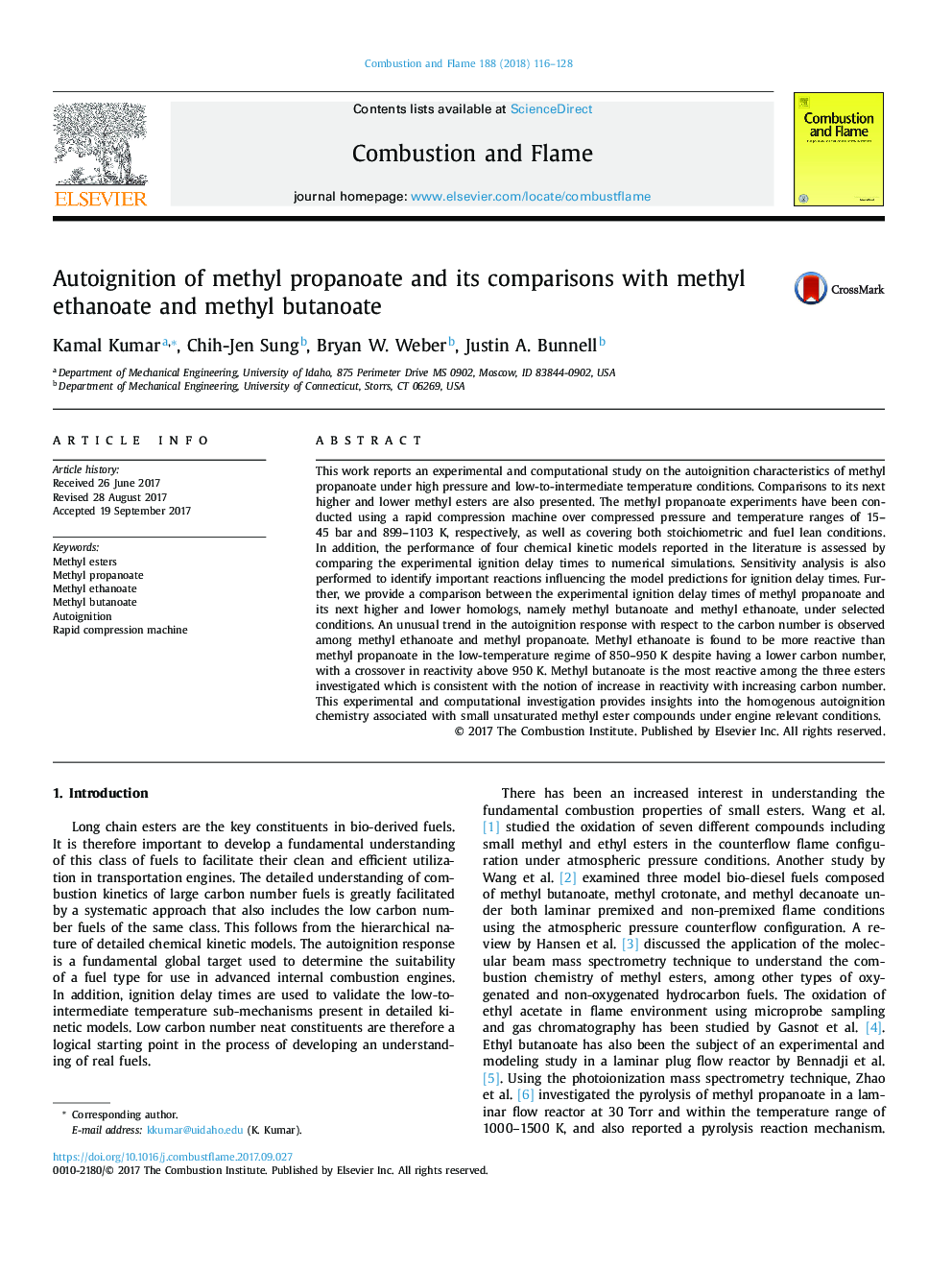| Article ID | Journal | Published Year | Pages | File Type |
|---|---|---|---|---|
| 4764335 | Combustion and Flame | 2018 | 13 Pages |
Abstract
This work reports an experimental and computational study on the autoignition characteristics of methyl propanoate under high pressure and low-to-intermediate temperature conditions. Comparisons to its next higher and lower methyl esters are also presented. The methyl propanoate experiments have been conducted using a rapid compression machine over compressed pressure and temperature ranges of 15â45Â bar and 899â1103Â K, respectively, as well as covering both stoichiometric and fuel lean conditions. In addition, the performance of four chemical kinetic models reported in the literature is assessed by comparing the experimental ignition delay times to numerical simulations. Sensitivity analysis is also performed to identify important reactions influencing the model predictions for ignition delay times. Further, we provide a comparison between the experimental ignition delay times of methyl propanoate and its next higher and lower homologs, namely methyl butanoate and methyl ethanoate, under selected conditions. An unusual trend in the autoignition response with respect to the carbon number is observed among methyl ethanoate and methyl propanoate. Methyl ethanoate is found to be more reactive than methyl propanoate in the low-temperature regime of 850â950Â K despite having a lower carbon number, with a crossover in reactivity above 950Â K. Methyl butanoate is the most reactive among the three esters investigated which is consistent with the notion of increase in reactivity with increasing carbon number. This experimental and computational investigation provides insights into the homogenous autoignition chemistry associated with small unsaturated methyl ester compounds under engine relevant conditions.
Related Topics
Physical Sciences and Engineering
Chemical Engineering
Chemical Engineering (General)
Authors
Kamal Kumar, Sung Chih-Jen, Bryan W. Weber, Justin A. Bunnell,
